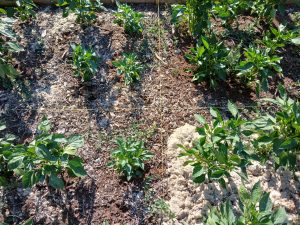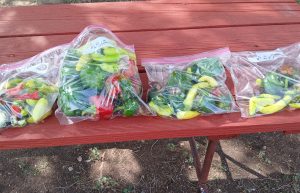‘Using Wool As A Soil Amendment’ Project Wrap Up

Each garden was planted in four sections; a control, raw wool on the surface, wool pellets incorporated into the soil, and wool pellets on the surface.
As the traditional growing season in South Dakota is coming to a close, the Using Wool As A Soil Amendment project is wrapping up with interesting results.
We started with seven gardens across South Dakota. Each garden was planted in four sections; a control, raw wool on the surface, wool pellets incorporated into the soil, and wool pellets on the surface. Pepper plants were planted in each quadrant. Plants were watered when needed and monitored for growth and production.
Gardeners reported the plants with pellets incorporated into the soil were slightly larger and watering needs were pretty even through all quadrants. Harvest results may need to be tested further. The plants with the raw wool on the surface out performed the others with 1 ½ times more peppers produced. Gardener hypothesis for the production is the raw wool helped keep the roots cool. Soil temperatures showed the raw wool quadrant being an average 5-10 degrees cooler during the heat of the day.

The plants with the raw wool on the surface out performed the others with 1 ½ times more peppers produced.
Soil tests in four of the gardens show that the pellets incorporated into the soil were higher in organic matter and averaged more nitrates, phosphorus and potassium. Soil pH and salinity did not change. These results show the hypothesis of the project was correct: incorporating wool into the soil will increase organic matter and increase soil fertility at least to the extent of the nutrition value found naturally in the wool. Request a complete copy of the test results by emailing sdspa.urbanag@gmail.com.
The Using Wool as a Soil Amendment project was a collaborative project between the SDSPA, South Dakota State University, SD Sheep Producers and SDSU Master Gardeners as well as several community gardens and home gardeners.